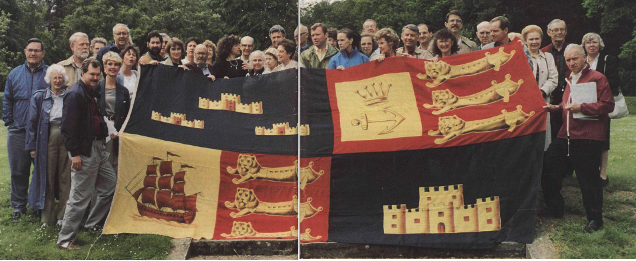
The Churchill Tours, 1983-2008: A Certain Splendid Memory
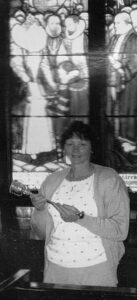

Another in a long line of Churchill tours is being promoted in England. Like most, it follows the well-worn “Churchill Trail”: Blenheim, Chartwell, the War Rooms, London shops he patronized, a hotel or two he supposedly frequented. Only $15-21,000 per couple for a week.
I sent the news to our friend Garry Clark—tour manager for the eleven Churchill Tours we ran over twenty-five years. I could not help being catty: “And to think that you, Barbara, Ann and I used to deliver two weeks, and places these people never heard of, for a third the money or less, not so long ago…..”
Garry replied: “That seven-day tour equates to five days after travel is taken into account. Also just think back to the people we met with Churchill connections who are no longer with us. And in many cases our tours visited their homes. Quite unique when you think about it—in fact impossible to be repeated. We definitely had the best.”
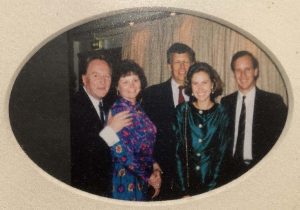
One of our guests, Randolph Churchill, remarked: “One thing for sure—they will not have as much fun as we did with Barbara and you and me at the Olde Bell at Hurley.” (Sir Winston’s great-grandson momentarily lost his thread while speaking to us at “the oldest inn in England.” I reminded him of how Robert Hardy, the greatest Churchill actor ever, immediately stood and ad libbed the rest of his talk.) Ah, the memories….
Genesis of the Churchill Tours
The Packard Club, whose magazine we published from 1975 to 2001, first suggested that our travels in and knowledge of Britain might be harnessed to produce a tour for members. By the time we revived the Churchill organization in 1982, we had hosted three vintage car tours. So it was only natural to do a Churchill.
The first was in 1983, when we brought forty people across the pond. There we met our Patron, Lady Soames, for the first time and visited the then-rather-fewer places on the “Churchill Trail.” Over the next twenty-five years, the traffic became worse but many things improved. The cramped Cabinet War Rooms became an expansive museum; many archives not previously accessible opened; historic venues burnished their Churchill connections. We even got into the RAF Battle of Britain bunker at Uxbridge: the plotting room where Churchill witnessed the peak of the great struggle.
Chartwell, of course, was the highlight when our tours visited southern England. They always welcomed us on a day closed to the public. We had the run of that historic home in company with friends and family of Sir Winston who had known it in its glory days. We encouraged everyone to march up the hill to the line of trees for “the finest view in England.” As Sir Winston told longtime secretary Grace Hamblin: “You’re a fool if you’ve not been up here before.”
Chartwell was just the beginning. Through what often seemed 24/7 Churchill labors, we met and became friends with many old colleagues, friends, family, scholars and historians. Some of them generously joined our tours.
With the Jellicoes to Scapa Flow
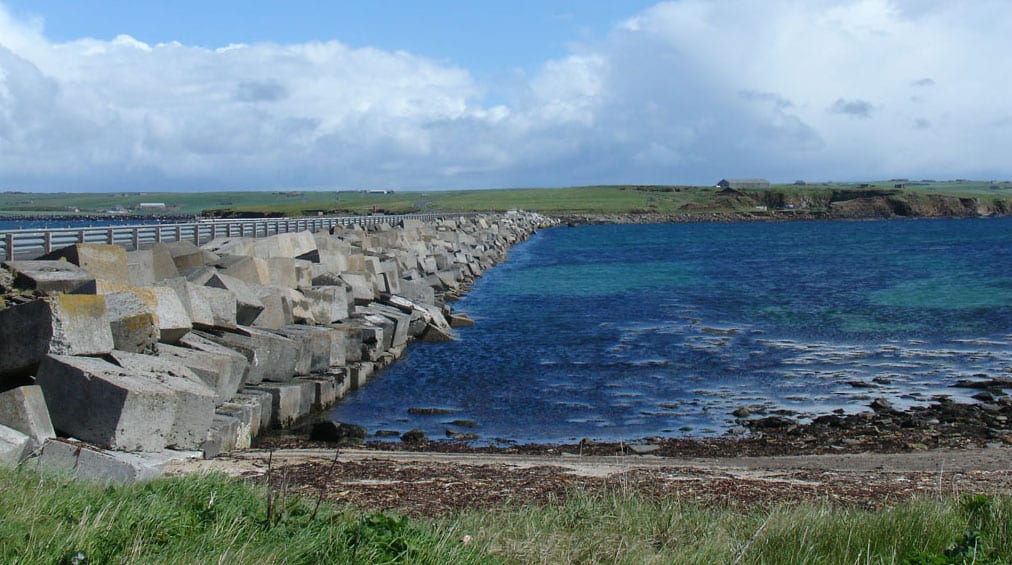
One such benefactor was George, Second Lord Jellicoe, son of the First World War Admiral. (Churchill called him “the only man who could have lost the war in a day.”) George and his wife Philippa traveled with us to the Orkney Isles, off Scotland’s north coast. Acting as our guides, they showed us everything—from Orkney’s remarkable runic monuments to the famous fleet anchorage at Scapa Flow.
The name Jellicoe is sacred at Scapa, and George arranged for the pilot boat to take us out. There on color sonar, we observed the wreck of HMS Royal Oak, torpedoed in 1939. Remaining in commission, she bears a White Ensign, renewed every year by Royal Navy divers. A war grave, she still oozes oil. A sombre vision.
Working southwest along the Scottish coast, we put our coach on a small ferry and navigated narrow Hebridean roads on the Isle of Mull. At Torosay Castle, we were welcomed for tea by Jacquetta James, sister of Pamela Digby Churchill Harriman, “Life of the Party.” This made a full circle, since we had earlier visited their ancestral home, Minterne Magna, Dorset.
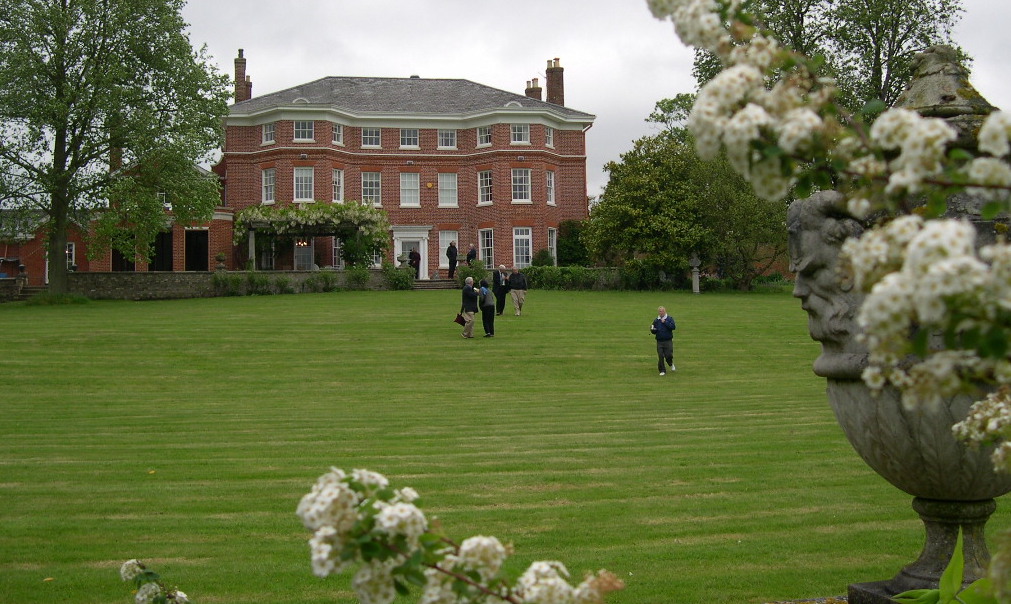
Suffolk to Wiltshire
Our devotion to the Churchill saga found tours visiting many private places that were simply never open to the public. In Suffolk we visited Stour, the beautiful pink brick Regency House where Randolph Churchill launched the “great work.” That was the Official Biography, which Hillsdale College has now completed. The owners, Paul and Birte Kelly, welcomed us for lunch. Sir Martin Gilbert, deeply moved, paid his first visit since Randolph had died in 1968. Amidst tears of memory he shared his experiences as Randolph’s assistant, and later as his successor.
Farther south in Surrey, we paid three calls on Hoe Farm, where a forlorn Churchill retreated after being sacked from the Admiralty in 1915. Life tenant Arthur Simon showed us where WSC first began to paint in oils. Three times Arthur summoned his neighbors to help dish out lunch. Similarly, Henry Thynne, 6th Marquess of Bath, showed us his Churchilliana collection at Longleat, Wiltshire.
Determined to see “everything”
We found and thrice visited “Lullenden,” an obscure and beautiful Elizabethan manor house in West Sussex. Little known, this was Winston and Clementine’s first country home (1917-19). Again the owners were kindness itself, despite a formidable crowd—some seventy on our last visit.
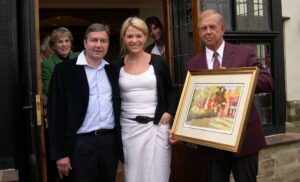
In the West Country, accompanied by genealogist Elizabeth Snell, we meandered through homes of the early Churchills, from the first Sir Winston to the First Duke of Marlborough. At Blenheim we thrice dined in the Great Hall through the generosity of the 11th Duke and his gracious Duchess Rosita.
Churchill tours found the house in Broadstairs, Kent, where the Churchill’s infant daughter Marigold died in 1921. We also visited her grave at Kensal Green Cemetery. We dined in the Pinafore Room, Hotel Savoy, meeting place of The Other Club. Our guest speakers ran from Lord and Lady Soames to Anthony Montague Browne and Jock Colville.
Isle of Wight odyssey
Garry and Ann Clark, Barbara Langworth and I cannot possibly repay the debt we owe to the many people who kindly put up with forty to seventy people traipsing through their property. I remember particularly a small row house in Ventnor, Isle of Wight. Here young WSC spent holidays with his nanny, Mrs. Everest. From the back garden, “little Winnie,” aged four, had watched the tragic sinking of HMS Eurydice, out in the Channel after a gale.
Garry had stopped at the house to enquire whether a “Churchill party” might visit. The residents had enthusiastically said “yes,” and their children were ready with drinks and snacks. To their surprise, fifty strangers walked through their ground floor to the back garden. We stood there lost in thought while I unfolded the story of Eurydice.
Nanny Everest was a staple of young Winston’s life. We found and often visited her grave at the City of London Cemetery. On our visit, digging with our hands, we found the half buried inscription on the base of her headstone: “By Winston Spencer Churchill and John Strange Spencer Churchill.”
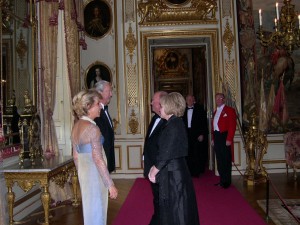
The next day, going from the everyday to the posh, we toured Osborne House, Queen Victoria’s summer mansion, and Cowes, where Lord Randolph met Jennie Jerome in 1873. Returning to the mainland we were met by Robert Hardy at Henry VIII’s immortal flagship, the Mary Rose. As Archery Consultant to the Mary Rose Trust, Robert told us all about Tudor weaponry and archers. Our host was Margaret Rule, the Trust administrator, who had contributed so much to the ship’s revival. We celebrated later with a dinner at Blenheim Palace.
France and Oz
In 1989 we crossed the Channel. In Epernay, Christian and Danielle Pol-Roger welcomed us at the home of Churchill’s favorite champagne: “The world’s most drinkable address.” Together they showed us cellars where the formidable beauty, Odette Pol-Roger, had walled off the best bottles from the occupying Germans.

We entertained each other at two groaning repasts of lunch and dinner. “Sir Winston made us promise to keep enough of the ’45 to last his lifetime,” Christian said. “Well, a few bottles were left over, so….” Pop went the corks, and the heavy fragrance of old-style vintage bubbly filled the room. “Try it with some cheese,” he added. “In France we have a saying: If you do not find the cheese, the cheese will find you.”
The longest of the tours was to Australia in 1991, where Sir Winston himself never traveled. The welcome from local Churchillians was robust. In Canberra we were hosted at the American Embassy by Ambassador Melvin Sembler. Its cornerstone, he told us, was laid on a fateful day: December 6th, 1941. The news from Pearl Harbor arrived the next morning, and the Embassy wired Washington: “What do we do now?” The answer came back: “Keep building it, or the Aussies will think we’re on the run.”
These were features of Churchill Tours that just don’t exist in potted travel agency excursions.
Last of the line, 2008
We gathered in Glasgow, diverting south into England for a brief visit to Sedbergh School. Here young Brendan Bracken was educated, later becoming its patron. We visited the campus where Bracken’s foremost biographer, Charles Lysaght, spoke of Churchill’s great friend. After a Lake District tour we motored over the Pennines to Edinburgh, stopping at Lennoxlove, home of the Dukes of Hamilton. This was where Rudolf Hess parachuted in May 1941, hoping to find pro-Nazi dissidents. (The 14th Duke had him arrested.) The Duke’s private museum was full of artifacts, from the Hess flight to the death mask—wait for it—of Mary, Queen of Scots.
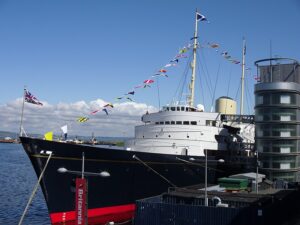
In Edinburgh we enjoyed lectures on Churchill and Scotland by the great historian Paul Addison, and a visit to the exhibits at the Centre for Second World War Studies. At a memorable dinner aboard the Royal Yacht Britannia, David Stafford spoke about Churchill and Secret Intelligence. From Edinburgh we traveled to Gleneagles, the famous resort, via Dundee, Churchill’s 1908-22 constituency. Met by Lady Soames and the Lord Provost John Letford, we joined a celebration of the centenary of WSC’s election as Member of Parliament for Dundee.
Memories of Fitzroy
After days of falconing, golf and horseback riding at Gleneagles we drove to Airlie and Cortachy Castles, Angus. For the second time on Churchill tours we were hosted by David Ogilvy, 13th Earl of Airlie, and the Countess of Airlie. A relative of Clementine Churchill, he had served as Lord Chamberlain of Britain. I remember a fabulous luncheon with the largest salmon we’d ever seen.
Spending two nights at magnificent Cameron House on Loch Lomond, we called for tea on Sir Charles and Lady Maclean at Strachur House, Argyll. Here on two previous occasions, his late parents, Sir Fitzoy and Lady Veronica Maclean, had entertained our tours with tales of their long and storied Churchill association. (Click here for Fitzroy’s story of “Lili Marlene.”)
Looking back
For the Clarks and Langworths, 2008 was the end. Hotels and restaurants were getting pricier, and increasingly hard to deal with. Managers we used to plan with over a drink were now demanding huge deposits and guarantees of exact numbers months in advance. Age and slothfulness were catching up to us, and we didn’t like the regimented contracts increasingly presented to us.
In the beginning we had no experience and were very ignorant. Nobody told us that tours had to be on a hectic schedule, changing hotels every night. No one said that tours must be militarized, “do it or else.” Certainly no one suggested we use second-rate facilities or less than luxury transport. Yet we always kept the price down. We offered unbeatable value for money to some 800 Churchillians who joined us over those twenty-five years. Our philosophy was that a number of individuals organize around certain mutual objectives but with their own tastes and interests.
That concept guided all our tours, Churchill and automotive. We look back on them and the friends we met with pride and affection. It was an honor to be asked to those exalted places, and to join in mutual respect for the Greatest Briton. That was something, as Sir Fitzroy Maclean once said, that left you both wiser and warmer at heart.
Thirty-two years
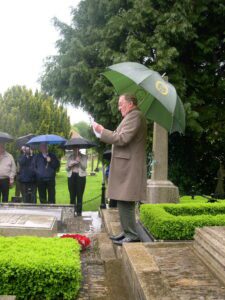
1977: Packard Automobile Classics, England
1978: Vintage Triumph Register, England
1979: Milestone Car Society I, England
1981: Car Collector magazine, England
1983: Churchill I, England
1984: Milestone Car Society II, Scotland
1985: Churchill II, England
1986: Car Collector magazine II, England
1987: Churchill III, England and Scotland
1987: Jaguar Cars I, England
1989: Churchill IV, England and France
1990: Jaguar Cars II, England
1991: Churchill V, Australia
1992: Churchill VI, England
1994: Churchill VII, Scotland
1996: Churchill VIII, England
1999: Churchill IX, England
2006: Churchill X, England
2008: Churchill XI, Scotland







2 thoughts on “The Churchill Tours, 1983-2008: A Certain Splendid Memory”
What great memories! We were part of the last Churchill Tour that Richard and Barbera led, all coordinated by Garry Clark. Being received by the Duke andDuchess at Blenheim, dining with the gracious Minnie Churchill, Ditchley, Parliament, St. Paul’s, Chartwell, meeting Martin Gilbert at Stour, meeting Robert Hardy at Bladon, meeting Mary Soames, all that is reported in this post warms our hearts.
=
Thanks for the memories, Charles
As Professor Barry Gough would say. “Great Stuff, eh.”
Comments are closed.